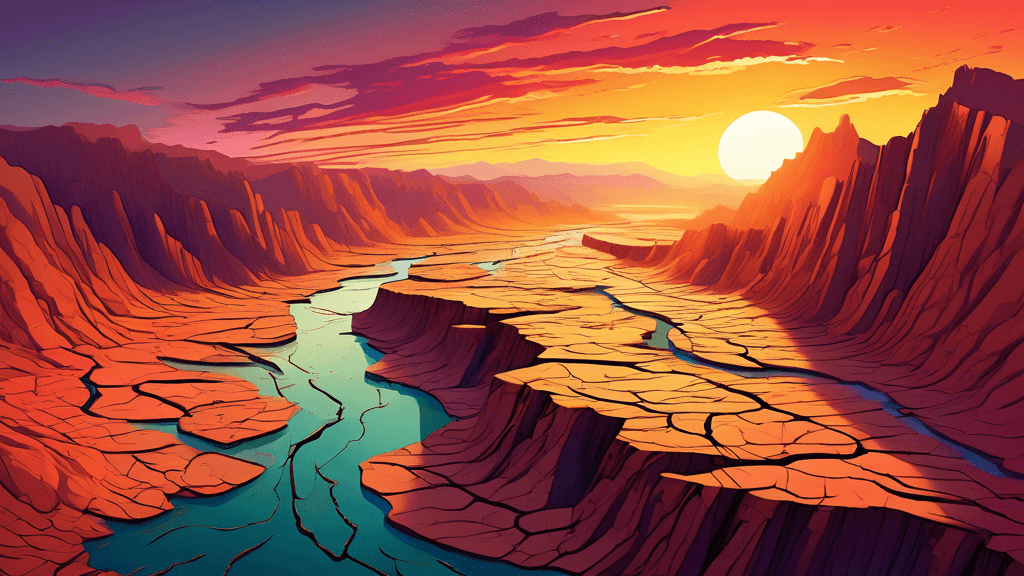
Shaken Ground: Capturing Landscapes Transformed by Earthquakes
Share
Understanding the Power of Photography in Earthquake Zones
Photography serves as a powerful tool for documenting and understanding the drastic transformations landscapes undergo following an earthquake. But what can we truly learn by capturing these moments through the lens of a camera? This exploration is not only about photographing a changed terrain, but also about deepening our understanding of the Earth's dynamic systems and the impact of these natural disasters on human and environmental spheres.
The Immediate Impact of Earthquakes on Landscapes
Earthquakes dramatically alter landscapes in seconds, a phenomenon which photographers have both the challenge and responsibility to capture responsibly. These changes might include:
- Ground fissures and cracks
- Shifted rivers courses
- Landslides and collapsed mountainsides
- Destruction in urban zones
But how can photography capture such extensive destruction and transformation effectively?
Techniques and Challenges in Earthquake Photography
Photographing the aftermath of earthquakes presents unique challenges. Technical precision, timing, and an ethically sensitive approach are crucial to producing impactful yet respectful imagery that tells the true story of the event’s devastation.
Using aerial photography, for instance, can provide a comprehensive view of geological and structural changes over vast areas. Drone technology, with its ability to hover over dangerous zones, has become indispensable in this area. Such evolved technology allows us not only to document but also to analyze the scale of destruction and help in planning recovery and reconstruction efforts effectively.
In the Field: Stories from Photographers
Renowned landscape photographers who specialize in disaster zones often speak about their experiences and the compelling stories behind their images.
Capturing images in the aftermath of an earthquake is about more than just documenting destruction, explains John Doe, a photographer with over a decade of experience in disaster zones. It's about conveying the resilience and the poignant human stories that emerge from such calamities.
These stories help personalize the disaster, making the effects of an earthquake more relatable and prompting a more compassionate response from viewers worldwide.
The Broader Implications of Earthquake-Induced Changes
The immediate physical transformation of landscapes is just one part of the story. The broader implications on ecosystems, human settlements, and future geographical research are profound:
- Ecosystems: Altered landscapes can lead to disrupted habitats and biodiversity loss.
- Human Settlements: Changes in the landscape can necessitate the relocation of communities and impact access to natural resources.
- Geographical Research: New landforms created by earthquakes provide unique opportunities for scientific research and can lead to better understanding and preparedness for future quakes.
Using Photography as a Tool for Environmental Advocacy
Photography does more than just record facts; it evokes emotions and prompts action. Photos that display the ravages of an earthquake can play a pivotal role in environmental and conservation efforts. They can influence policy, drive resource allocation for disaster relief and recovery, and raise public awareness about the risks and realities of living in earthquake-prone areas.
Every photograph of a devastated landscape is a call to action, remarks Jane Smith, an environmental photographer. It's a reminder of the transient nature of our existence and the urgent need to build more sustainably.
Conclusion: The Impactful Role of Photographers
Photographers capturing landscapes transformed by earthquakes carry a significant responsibility. They are not only artists but also documentarians and activists in their own right. Through their lenses, they have the power to inform and move the global community towards more profound empathy and action.
As viewers and supporters of this art form, we should strive to engage with such photography thoughtfully, understanding the deeper narrative behind each image. Let us appreciate the critical role these visual stories play in our understanding of natural disasters and their impact. Let your gaze linger on these images longer, and let your actions be inspired by their powerful messages.
How will you respond to the call? Explore, share, and contribute to the dialogues initiated by these crucial visual documents. Remember, awareness is the first step towards meaningful change.





